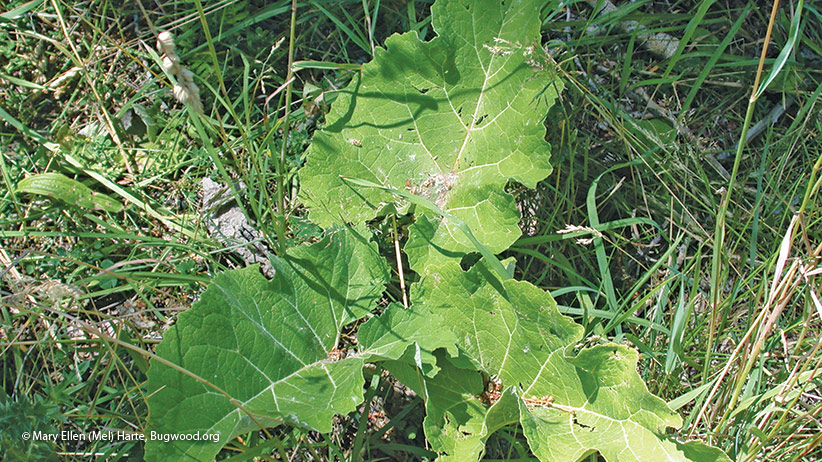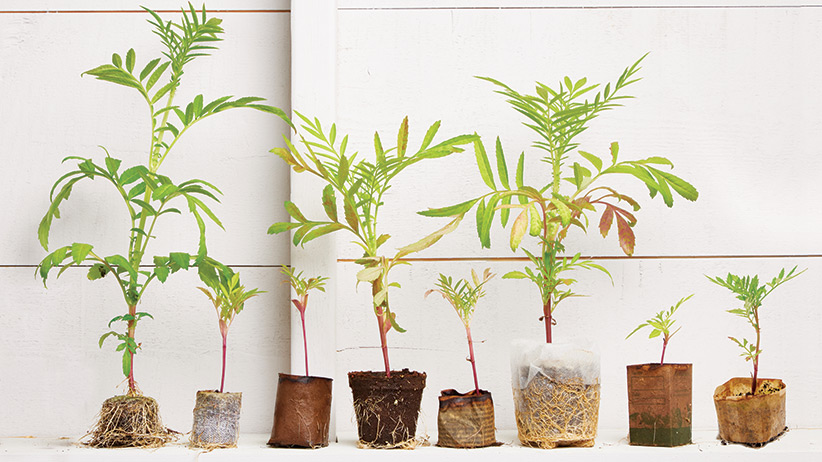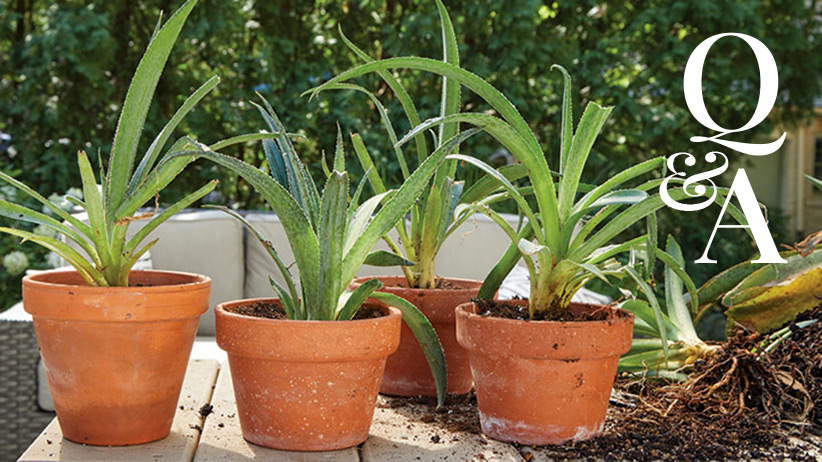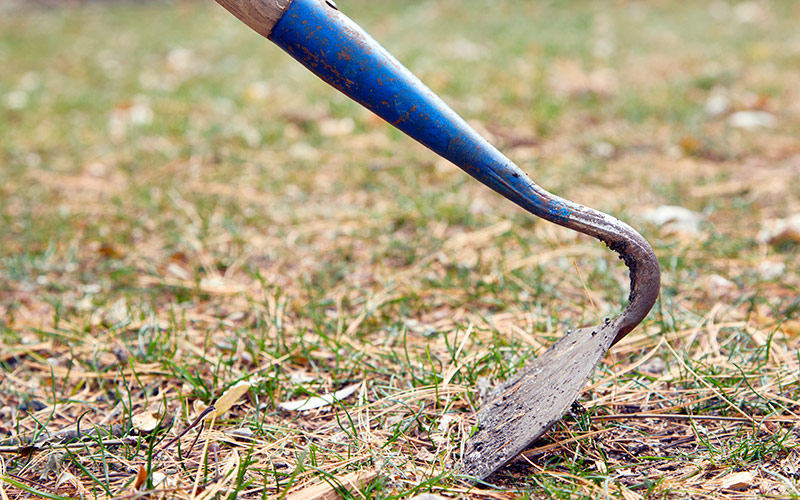
The garden hoe — an essential tool
Years ago, as I hacked huge weeds out of my mother’s enormous vegetable garden with a traditional garden hoe, I decided I would never use one of these horrible tools again — it would be easier to pull weeds out by hand. Turns out, I was probably just using the wrong type of hoe. What we all think of as a garden hoe (like the classic draw hoe above) is really best for breaking up clods of dirt and turning over new garden beds.
Different types of garden hoes
If you really want to eliminate weeds, there are garden hoes that do the job much better than the classic draw hoe. As a matter of fact, there are different hoes for nearly any garden task involving soil. Let me show you which ones I like for breaking up soil, weeding and planting.
You Might Also Like:
How to start a vegetable garden
Calculate how many vegetables to plant
5 Tips to control weeds
Fight these common garden weeds

Draw hoe
This is the garden hoe I cursed as a child — the draw hoe. It is used with a drawing action: Chop into the soil, then pull or draw the head toward yourself and break up clods into the furrow. It’s a good all-purpose tool, but best for large-scale tasks, not fine details.
A draw hoe works great for:
- Breaking up large areas in early spring for planting
- Digging and moving piles of dirt
- Chopping out big weeds
- Hilling potatoes
- Removing chunks of sod for new beds
- Breaking up clods of soil
Recommended draw hoes
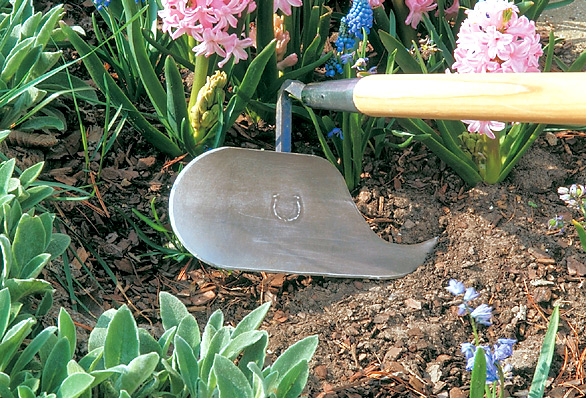
Multi-purpose garden hoe
One tool, many uses. Here’s a new angle on that venerable tool, the hoe. The large, curved blade makes moving soil easy, so you can cover a large area in a short time. The sharp point on the right makes it handy for weeding in those tough places like sidewalk cracks or between plants. We like it because it made deep, even furrows in our vegetable garden in one pass.
Recommended multi-purpose garden hoe
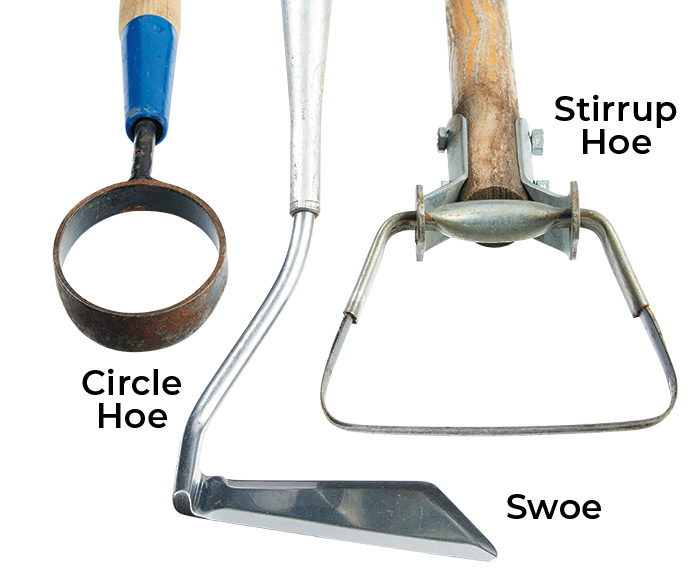
Scuffle hoes
Just a quick cut under the roots can eliminate many weeds. Scuffle hoes, like those pictured above, suit that need perfectly — they skim under the surface of the soil no more than a couple of inches. They are superb at shearing off small weeds in soft soil, so you can make the job go quickly and easily by using them frequently and before weeds get large.
Used with a push-pull action that can slice off weeds in both directions, they come in a variety of shapes and sizes, from a diamond-, triangle- or circle-shaped blade that only stirs soil in a small area to stirrup hoes and swoes that can take a wider swath of weeds out with one motion. Scuffle hoes usually have a small angle between the head and the handle (20 to 30 degrees), which facilitates the horizontal push and pull.
Scuffle hoes work great for:
- Cultivating small weeds
- Loosening up soil and breaking up surface crusts
- Weeding in small areas and tight spaces
Recommended scuffle hoes
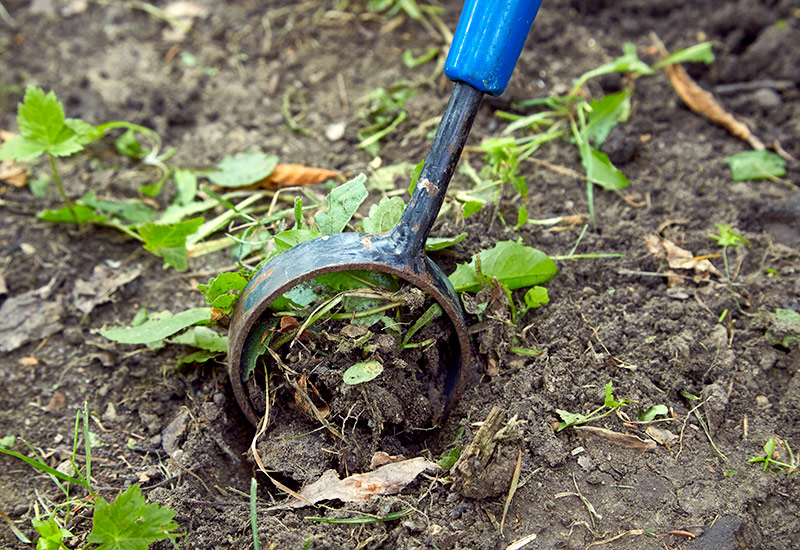
Enclosed-bladed weeding hoes
Scuffle hoes with enclosed-bladed heads, like the circle hoe above, can be used close to mature plants without fear of shearing off foliage — the sides keep you from accidentally chopping off a treasured plant or seedling.
Recommended enclosed-bladed hoes
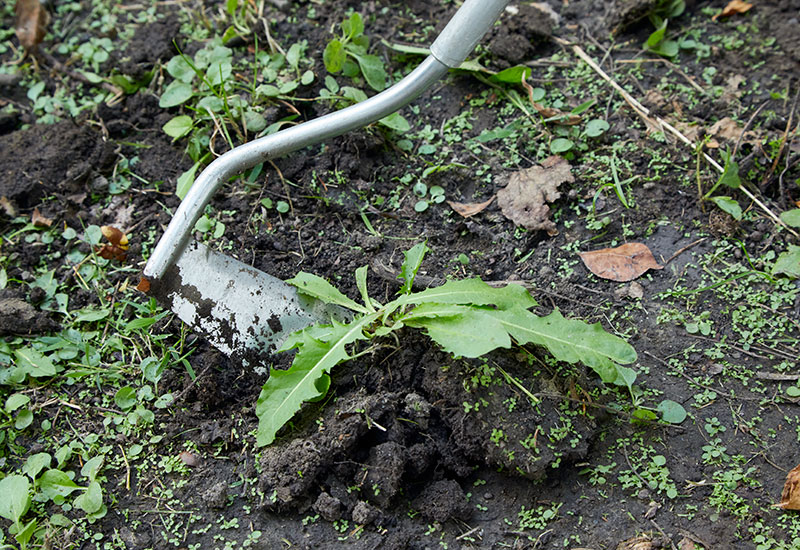
Swoe
The swoe in the photo above can slide under weeds that form rhizomes or runners, like creeping Charlie, to uproot the mass, then you can pick it up, shake off the soil and remove the plant, roots and all. A pointed tip on this wedge-shaped head can make furrows or slip into pavement cracks to flick out weeds.
Recommended swoes:

Stirrup hoe
The stirrup hoe's head is loosely held to the handle or even hinged to allow cultivating in either direction.
Recommended stirrup hoes:
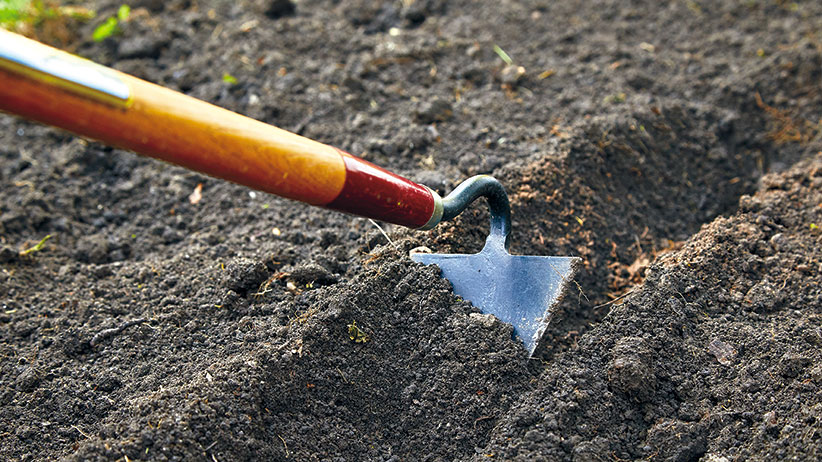
Warren hoe
A warren hoe makes planting seeds a breeze. This lightweight hoe may be triangular in shape, as in the photo above, or more like an arrowhead, with pointed “ears” on the opposite end of the tip. Its head is usually on a 90-degree angle. The pointed end digs a neat furrow in tilled soil, perfect to plant seeds in rows. If your warren hoe has “ears,” flip it over and close the soil over the seed by dragging the points across the raised piles down the row, which pushes the sides together as you pull. Those pointed tines can also be used to cultivate smaller areas with a chopping and pulling motion.
A warren hoe works great for:
- Digging small holes for individual plants such as seedlings or annuals in cell packs
- Creating a furrow for vegetable seeds
- Digging out weeds with spreading roots
Recommended planting hoes:
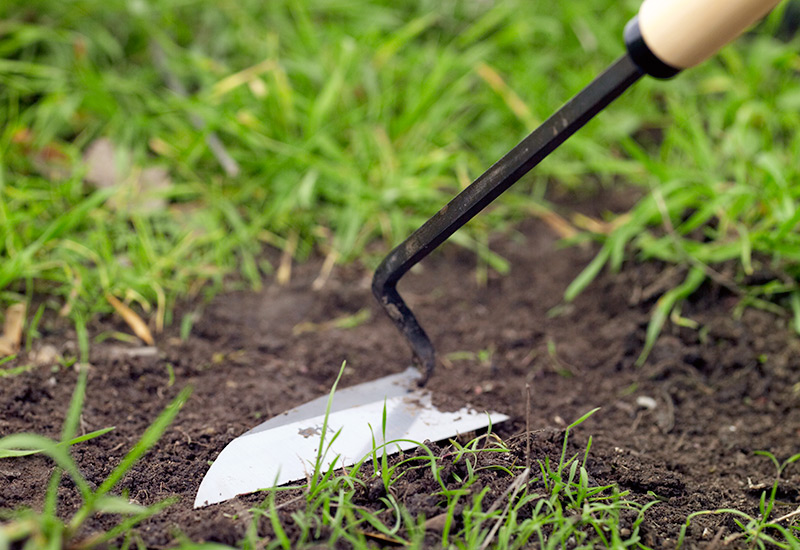
Short-handled garden hoes
Sometimes a short-handled version of a given hoe is exactly what I need: When I’m on my hands and knees in a crowded perennial bed, the Dutch hand hoe (a scuffle hoe) is perfect for shearing off the roots of tiny, thick-growing weeds that are too small to pull individually. And a hand-held warren hoe is my go-to for planting and weeding in a raised vegetable bed.
Recommended short-handled garden hoes:
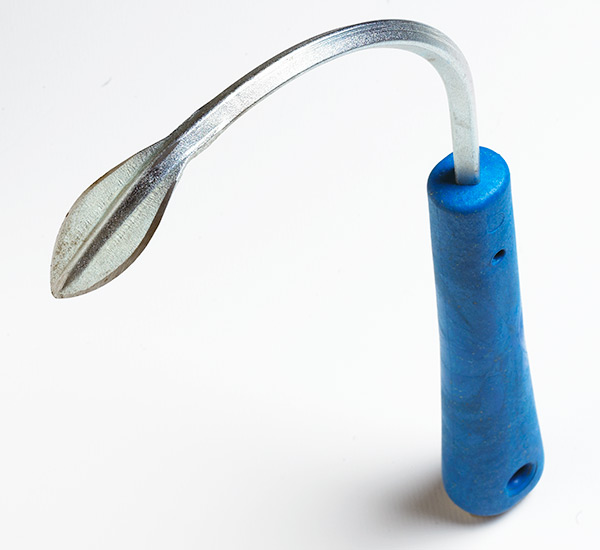
Serpentine garden hoe
The small, pointed tip of a serpentine hoe gives this tool its reptilian name. It works great to snake into tight spaces and uproot weeds, as well as prying plants out of cracks in concrete or between pavers.
Recommended serpentine hoes:

Keep garden hoes sharp
No matter what kind of garden hoe you use, the most important thing is to keep it sharp. A sharp hoe will slice into soil and cut off weed roots much easier than a dull one, and you’ll expend less energy using it.
How to sharpen a garden hoe
- To sharpen, set the garden hoe on a stable surface or in a vise with the cutting edge facing up.
- Using a tool-sharpening file, draw the file up along the outside edge of the head toward the inside edge at about a 30-degree angle (or if the hoe has a bevel, align the file with that angle).
- After several passes on the outside edge, lay the file flat on the inside edge and file off any burrs that have formed.
Clean the hoe after each use and sharpen it often. Apply a light coat of general purpose household lubricating oil to the blade before storing for winter to keep it from rusting and becoming dull. Now it will be all ready to go in the spring!
You Might Also Like
Clever garden tool tips
How to choose the right rake
Must-have pruning tools for gardeners
Consider your height when buying a garden hoe
Hoeing weeds doesn’t have to be the back-breaking job we envision. You just need the right garden hoe, and one that fits your size. Here’s a few tips to help you shop for a garden hoe.
- When you are at the store, hold the hoe upright next to your body. The top of the hoe should hit between your armpit and the top of your shoulder.
- Next, hold it out in front of you as if you were using it. The end of the handle should hit you at about your belly button.
- You should be able to grip it on the end to use while standing fairly upright. The less you bend, the better your back will feel later.
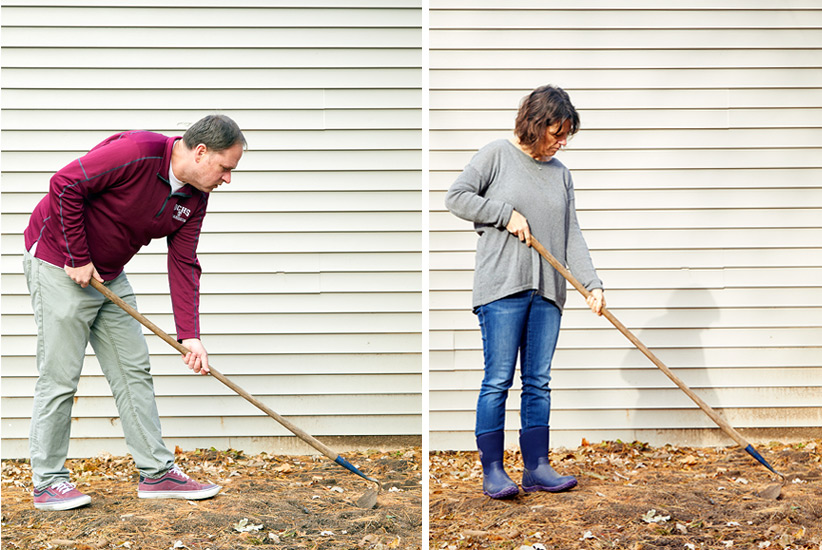
Finding the right length garden hoe handle
Most hoe handles are about 5 ft. in length, which works for the average sized person. But if you are very tall, you may have to bend over too much to use a hoe that length, so look for a specially-made long-handled hoe. If you’re petite, a long hoe juts out and is unwieldy if you hold it toward the middle, and you may have to shorten your hoe handle to make it more comfortable to use.
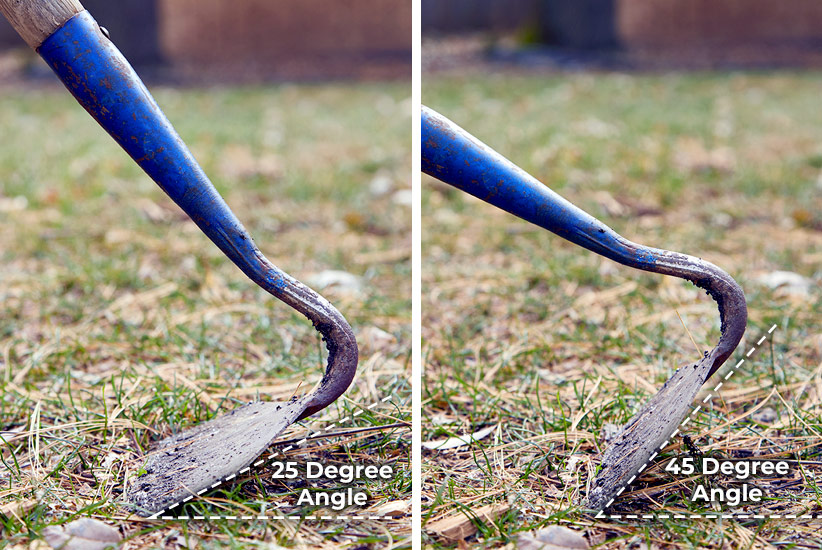
It’s all about the angle
Some hoes can be harder to use if the blade angle is not correct. For instance, the draw hoe above should have an angle between the back of the blade and the ground between 20 and 30 degrees. It will cut into the soil easily. As you increase that angle by lowering the handle, the hoe doesn’t perform the same; you may end up chopping into the soil, which is harder work. Decrease the angle too much by straightening the handle vertically and the hoe skids off the surface of the soil instead of slicing into it. It is not always evident what the correct angle is for a given hoe, but if it seems like it doesn't work well, you may be holding the hoe at the wrong angle to do the job.
You Might Also Like:
Adaptive tools for gardeners
Clever garden tool tips
How to choose the right rake
Must-have pruning tools for gardeners
How to clean and sharpen old pruners
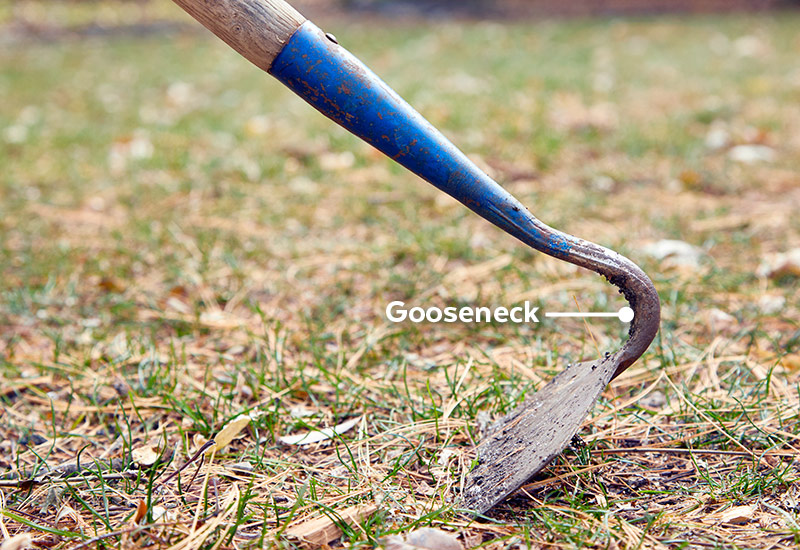
Adjust your hoe
Most standard draw hoes have a 60- to 70-degree angle and a large head ideal for heavy-duty cultivation. If your draw hoe has a gooseneck (a curved connection to the handle, like the one above), you may be able to modify it to be a better weeding tool: Reduce that angle by carefully bending it in a vise so it can slice into the soil easier to uproot weeds.
We found great information on how to do this at EasyDigging.com, along with more helpful tool tips.








